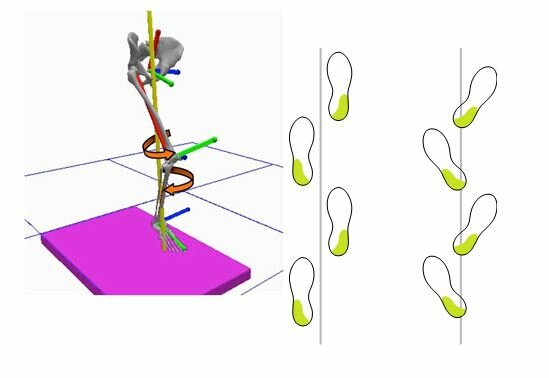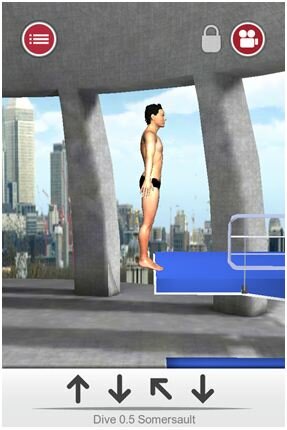Olympic athletes are turning to advanced 3D technology for better performances. Nick Lerner looks at the technology they use*
*Guest article written on behalf of Dassault Systemes

When the difference between silver and gold medals can be as little as two hundredths of a second Olympic and Paralympic athletes are desperate for performance enhancement. That’s why today’s elite athletes have turned to 3D technology for competitive advantage. It’s legal and delivers impressive training and performance results.
Fast Forward
3D applications are used in sport around the world. For example, one well known sports shoe manufacturer has secret laboratories where exacting scientific measurements are taken to create shoes that correct imperfections in runners’ gaits.
Ball sport teams use 3D technology to determine exactly how balls interact with playing surfaces, racquets, boots, sticks and hands. This level of analysis looks at surface friction, bounce and other dynamics providing knowledge that lets teams develop new tactics, techniques and equipment for better results.
Shooting and archery teams go to extraordinary lengths examining ballistic science and equipment designs to develop shooting technique that give them the edge. They even factor in event-day predicted wind speeds and air pressure into account to gain competitive advantages.
The same is true for rowing, sailing, windsurfing and canoeing where very slight improvements bring significant points advantages. Understating water and airflow and aqua dynamics is crucial and only 3D can bring it alive and make it understandable by everyone involved.
Cycle Times
Olympic and Paralympic cyclists use bikes that are custom developed to deliver ultimate performance. But Team GB has a secret advantage because the Velodrome and their bikes have been perfectly matched to each other. No one will see Team GB’s cycling equipment before the first practise sessions. Interestingly the finish line has been moved 5 meters from its usual position in the 2012 Olympic Velodrome to grant further potential advantage to home squads as well as higher speeds for more record breaking. The more these details are factored in at every stage including training, the greater advantage can be derived.
Mind Games
Experiments before the Moscow 1980 Olympics proved that mental training brings gold. It is as important as physical training and helps the body be more effective.
Olympic teams and players use ultra realistic immersive technologies to help mental training. Wearing special glasses in 3D projection ‘caves’ they are able to experience what it is like to be in the venue using virtual equipment before it has even been built. This gives athletes extra confidence that helps them train for a better performances on the day. The ability to get pre-event virtual experience is known to hone reactions and encourage mind-sets that athletes need to win and break records.

Shoe Sized Secrets Revealed
Wayne Rooney makes sure that he knows the right shirt colours for the next game so he can more accurately visualise the match and play it while mentally practicing in 3D.
One company behind much of this development is Dassault Systèmes. Their 3DEXPERIENCE Platform is used by teams and sports equipment makers to optimise results. Digital product visualisation and equipment optimisation have been in use for decades. What is new is that 3DEXPERIENCE technology has made it more realistic and scientific. It takes in more of the real world to put products and people in context. That allows equipment to be precision matched to individual athletes and their usage circumstances.
Slight imperfections in a runner’s gait or a tendency for more power to be generated on one side than the other can be compensated using sophisticated analysis and designs developed with the 3DEXPERIENCE Platform. DS software also ensures perfect physical products are made from virtual prototypes. This eliminates risk and wasted effort for more sustainable innovation.
In Deep

3D helps learn about dives, how to count somersaults, degrees of difficulty and how judging works with the Tom Daley Dives app.
Divers can analyse their performances incorporating video reviews and use realistic avatars to study individual muscle groups, skeletons, balance and flexibility. They can see how their body works to a molecular level. Subsequent training and performance improvements are significant because they apply industrial 3D experiences to sport. They also use the same applications to optimise a person as an airplane or study a fish or birds in flight.
At London 2012, 3D is working to produce more star performances. Those involved have information that lets them mentally practice performances more realistically. They can even see what its like to beat their rivals which can be a massive confidence booster.
Olympic gold hopeful diver Tom Daley’s own app allows anyone to see how dives are made and scored. He is known to visualise the dive twice in his mind while climbing to the dive platform. Tom said, “It’s weird when I play, the app, as myself but it’s really good. It’s addictive, I’d say. The other divers think it’s quite funny I have a game. It’s a good way of chilling out when I’m travelling.”
The Zen Like Approach
Practice produces confidence, better reaction times and a Zen like approach to what would otherwise be a daunting even frightening experience. A simple virtual tour of the venue helps athletes prepare. But that experience facilitated by immersive 3D can develop much further. Virtual races and realistic immersive experience build towards better understanding by athletes and their managers, equipment makers, venue designers and the public who can all share the same information in new easy to understand ways. Gaining access to this level of data, often presented as an immersive 3D experience, is a must for sport’s leaders.
FREE WEEKLY 3D NEWS BULLETIN –























